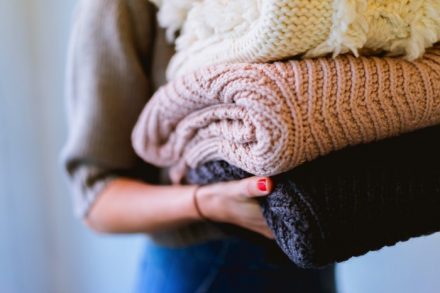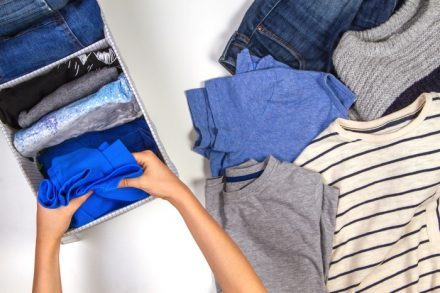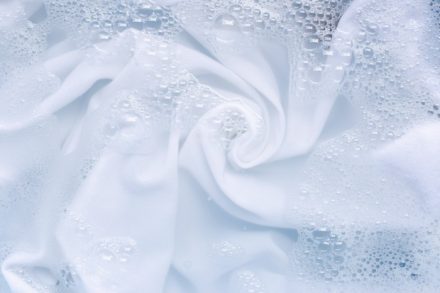Smart Key: Sustainability – Is quality the ultimate key to circularity? The - Première Vision Paris - Denim Première Vision - Première Vision New York
Let’s unpack the secrets of sustainable materials. At the heart of eco-design issues, the Smart Keys focus on analysing all the available solutions, to help you become more informed in your materials sourcing! Today, let’s talk sustainability. From consumers to governments, there is a growing consensus in favour of circularity. Recycling, the primary tool employed today, allows materials to be revalued and must be combined with two invaluable allies – use and durability – to forge a circular economy.
Quality: a key factor in sustainability

As simple as it may seem, clothing use is a key parameter in terms of reducing environmental impacts. Prolonging the life of a garment means amortizing its environmental cost. As for durability, a factor too-long ignored, it constitutes a fundamental approach, making it possible to extend the life of a garment thanks to its quality.
In 2020, a Kearney survey looked at the reasons why consumers dispose of their clothing. The top 3 findings? Some 36% did so because the garments were either damaged or worn out, 28% because they no longer fit, and 20% because they no longer liked them.
Have changes in consumption and the advent of fashions designed to be constantly replaced sounded the death knell for quality?
Physical durability: Do materials have a use-by date?
While clothes may have a low price at the check-out register, they often carry hidden costs in terms of the environment, social issues and quality. If you look at this last parameter, you soon realise that the balance between purchase cost and cost of use is quickly thrown off by a quality/price ratio that is rarely met.

From rapid colour bleeding and discoloration, to pilling and fabric distortion, it often takes a mere two or three washes to reveal the true nature of a product. Questionable quality controls and a speedy approach to design and development so as to hit the shelves as soon as possible mean that the physical durability of products is undermined, taking a back seat to the race for time and price.
Regarding circularity, the European Environment Agency insists on the need to slow down production loops, pointing to higher product quality and longevity as a preferable focus.
While it is important to implement recycling and material recovery, the priority must be durability, reuse and repair of clothing. The most sustainable garment is one that already exists.
Read also: Smart Key: Recycling – can the fashion sector become self-sufficient in resources?
Durability and desirability… towards programmed obsolescence?
Pre-collections, capsules, drops… our tastes are overly solicited and over-stimulated on a daily basis by a constant slew of new products. So, how can we avoid succumbing to this constant flood?
Consumers are viewed as multi-faceted, adapting their look to their mood, hungry for change. Most of the time, the act of buying a fashion product is more tied to desire than need. Emotional durability is the subject of much examination, but it’s hard to quantify – how can you measure such a subjective criterion?

Interest in an item may be linked to social norms or be an outward sign of belonging brandished as a banner. Creating limited editions could make a product more valuable due to its rareness, but wouldn’t this lead to a pressure to buy to avoid missing out on a must-have yet not widely-available product?
Buying a more expensive product might demonstrate its appeal, but does cost guarantee that a product will be loved, worn and kept longer? While it’s possible to test the physical qualities of products using standardised methods, the intangible quality of attachment to a product remains hard to gauge.
So, faced with all these questions, what leverage can be used to promote the long-term durability of a product?
Smart Key #1 – Creation: Quality assurance

This is the adage of slow fashion: design it to last. Beyond the pure players of slow fashion, this approach is spreading because quality is an undeniable asset in terms of being able to recycle products in new materials, capable in turn of enduring over time.
To assess a product’s endurance, many tests exist to demonstrate a material’s qualities. Depending on an article’s expectations and uses, we can analyse and evaluate a product’s colourfastness to washing and perspiration, the strength of the seams, the absence of pilling, etc. Multiple criteria can be considered to ensure a garment remains a faithful companion for more than one season.
This is all the more important as second-hand networks are booming. This financial windfall, which has been hailed as sustainable, is driving brands to set up their own second-hand networks. This opportunity will continue to grow if the fundamental pillar of a product’s second life – and therefore its value on the market – is present: its quality. It’s up to the industry to design the future vintage products of 2050!
Smart Key #2 – Consumption: product care
Once in the hands of consumers, it becomes their responsibility to ensure that a product lasts longer. Washing and careful maintenance are essential to preserving a garment over time.

Once a product has a wear defect, repair networks can provide an essential service. Upstream, the product can be designed to be repairable and accompanied by a service offered by the brand.
This approach can strengthen emotional durability, with the incentive to repair and preserve a once-cherished product, rather than resorting to replacing it with a low-priced, low-quality item.
Smart Key #3 – Regulation: Extended Producer Responsibility and environmental labelling

The Extended Producer Responsibility scheme sets a fee for brands to contribute to the costs of managing the end-of-life of products. This is how waste-to-resource projects can be funded.
In order to encourage eco-design by brands, eco-modulation encourages best practices, as items that meet sustainability criteria or contain recycled materials get a reduction in this earmarked tax. The durability scale is based on tests to be carried out on products to guarantee the quality of the articles.
This eco-tax modulation system is already in place in France, and is being developed in Sweden, Denmark and the Netherlands, with the aim of being harmonised across the European Union.
In parallel, given the prospects of environmental labelling, the current work of the BNITH in France and the PEF in the European Union seeks to establish standardised methodologies for measuring durability, thus making it possible to analyse the main causes of product end-of-life. These criteria will supplement and potentially modulate a product’s environmental score with a bonus/penalty, to go beyond simple life cycle assessments.
In 2019, Mistra Future Fashion reported that doubling the lifespan of products could reduce their carbon footprint by 49%, and by as much as 67% if these long-life items were produced with solar energy. A product with a short life span will need to be replaced, and will therefore create environmental impacts through the production of a second item, whereas a product with a long life-span can amortise the environmental impacts of its production over time.
So, how do you achieve a cutting-edge look that will last? The answer is certainly where style is born, by building one’s own identity, mixing new and second-hand quality products, without relying on the fleeting articles of the moment, to build the wardrobe of the future: the one that lasts.
Sources:
- Textiles and the environment: the role of design in Europe’s circular economy – European Environment Agency – Février 2022
- Three-Dimensional Product Circularity: a working paper from RISE Sustainable Business – RISE Research Institutes of Sweden – March 2020
- Can circularity save the fashion industry – Kearney – 2020
- Critères des éco-modulations – Refashion
- Groupe de travail durabilité et projet Durhabi – Bureau de Normalisation des Industries Textiles et de l’Habillement – 2022
- Driving circular economy through EPR – Eunomia for Changing Markets Foundation and the European Environmental Bureau – Février 2022
- The outlook report 2011-2019 mistra future fashion final program report – RISE Research Institutes of Sweden – 2019
